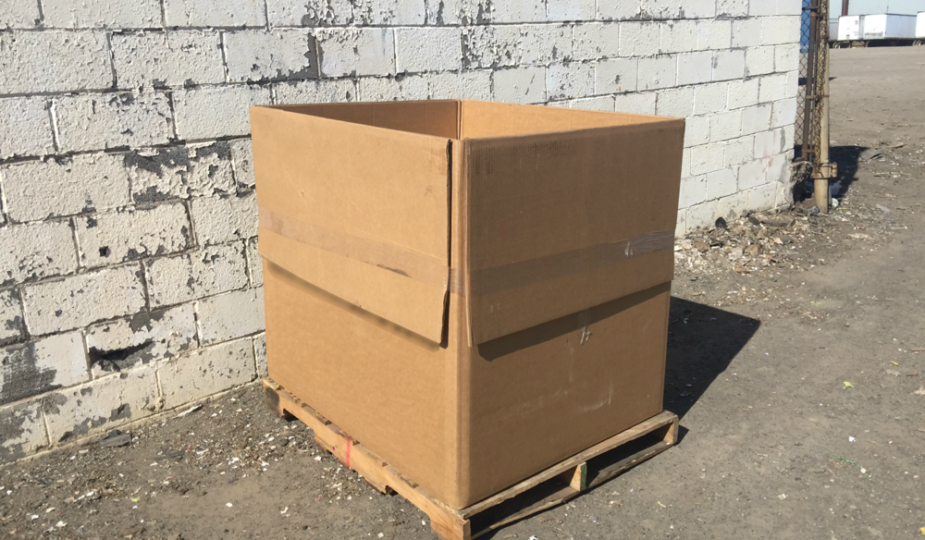
Gaylord Boxes Versus FIBC Bulk Bags
If your business has any goods that need to be shipped or stored, you might use Gaylord boxes for those purposes. However, if you have not been using them, then you might wonder whether or not Gaylord boxes are the best storage solution for your business. There are numerous reasons why it may be better to use bulk bags instead of Gaylord boxes for storing and shipping your goods. So let’s discuss Gaylord boxes and how they compare to bulk bags.
What are Gaylord Boxes?
The shipping industry term “Gaylord box” refers to many big cardboard containers. They are bulk-size corrugated containers and allow you to store or ship a pallet full of products in one container. They have been sized to neatly fit on top of a standard pallet. Gaylord boxes were originally from Gaylord Container Company, a North American manufacturer. The term has evolved so that it is now a generic name for any pallet-sized bulk box.
Other names that are used to refer to Gaylord boxes include:
- Octagonal bin.
- Pallet container.
- Bulk bin.
- Skid box.
- Pallet box.
- Jumbo box.
- Produce bin.
- Gaylord tote.
- Heavy-duty box.
- Heavy-duty box.
- Bulk cargo container.
These terms all refer to the same thing – which is a lightweight and large heavy-duty cardboard container.
Gaylord boxes are used for many different purposes. Within the transportation and warehousing industries, they are very popular. At local grocery stores, you will find them full of produce. Most of them have the classic rectangular shape, although there are octagonal-shaped ones as well. Some come with a lid while others do not. Made out of corrugated cardboard, under typical use they are resistant to bursting, splitting, and teaing. However, they are usually only intended for single-used since the material is not very durable.
How Large Are Gaylord Boxes?

Gaylord box is a generic term that is used to refer to bulk-sized boxes. They come in many different sizes. Generally speaking, they fit on top of pallets. There are a few different kinds of Gaylord boxes with different dimensions, which include:
D containers: The internal measurements of these Gaylord boxes are 58 inches x 42inches x 45 inches. They have thick corrugated sides which makes the outside bigger.
E containers: These are smaller compared to D containers. They have internal dimensions of 41 1/4 inches x 28 1/4 inches x 24 1/4 inches.
Standard Gaylords: The most popular and standard size of the Gaylord box measures 48 inches x 40 inches x 36 inches. The 40-inch x 40-inch x 40-inch Gaylord box is another common size. This size allows the pallet container to rest on a standard 40-inch x 40-inch pallet or a bigger 48-inch x 40-inch pallet.
Small Gaylords: There are also smaller sizes of Gaylord boxes that are used for specific applications. These smaller sizes range from 36-inch cubes to 40 inches x 30 inches x 30 inches.
In addition to the measurements of the Gaylord container, the wall thickness will vary as well. Single-wall boxes work great for lighter-duty applications. There are some Gaylord boxes that have up to four to 5 wall Gaylord boxes and may contain heavy-duty materials such as scrap metal.
Gaylord Box Capacity
In addition to the size of the Gaylord box, considering its capacity is also essential. More weight will usually be supported by a larger box. However, the box’s strength is also affected by the number of layers and construction. Gaylords vary in terms of their weight capacity. There are some D containers that can hold as much as 1,200 pounds. Others are able to handle less or more than that.
Standard pallet boxes that measure 48 inches x 40 inches x 36 inches might have a weight capacity that ranges from 4,000 up to 5,000 pounds. About 3,000 pounds can be held by smaller octagonal boxes and 40-inch cubes. Different weight capacities can also be held by smaller Gaylord boxes as well. Containers measuring 40 inches x 30 inches x 30 inches are able to hold 1,200 up to 1,500 pounds, and smaller 36-inch square boxes are able to hold 1,000 up to 1,200 pounds. The exact weight capacity of a Gaylord box will depend on the manufacturer’s specifications, the number of box wall layers, and dimensions.
Why Switch To Gaylord Boxes From FIBCs?

A Gaylord box is a multi-layered corrugated cardboard box that is used by many companies for shipping and warehousing since they are durable and also fit onto standard pallets very nicely. Although those who load and store goods frequently find them to be very convenient, there are other things that need to be considered. Flexible Intermediate Bulk Containers – or FIBCs or flexible bulk bags – in several areas provide advantages over Gaylord boxes.
Switching to FIBCs from Gaylord boxes will save you money, space, and time.
An FIBC is a bulk bag that is made out of woven, flexible, material – most commonly polypropylene plastic. They easily fit onto pallets, just like Gaylord boxes, so they can be moved around by forklift. On the top, they also have sleeves or loops, which allow them to be lifted mechanically from the top side.
They are designed to ship flowable, solid materials like granules, flakes, and powder, and also have a number of other storage uses as well. Those features make them great for pharmaceutical, chemical, and agricultural applications. They provide other industries with many advantages as well. In 2016, almost 212 million FIBCs were purchased by users outside of those three sectors.
Whenever you are considering Gaylord boxes, FIBCs are frequently a better choice. They offer numerous advantages, including:
Time: FIBCs are stronger and bigger, which also makes them faster. An FIBC is able to hold a load of goods ranging from 1,000 up to 5,000 pounds. As many as 100 Gaylord boxes might be needed to hold the same amount that one FIBC can. This means more containers that will need to be packed, loaded, and unloaded, and that can be very time-consuming. In the meantime, FIBCs provide convenient sleeves, straps, or lift loops which provide numerous ways that they can be handled using a mechanical lifting device.
Space: Gaylord boxes are durable. However, they normally are not strong enough to be able to stack them on top of each other. Pallets are needed for stacking Gaylord boxes, which can be wasteful and cumbersome. When a pyramid stacking or supported stacking method is used, many FIBCs can be stacked up without using pallets, which provides you with a lot of space savings. When they are not being used, you can fold and stow away FIBCs, which takes up only a minimal amount of space.









